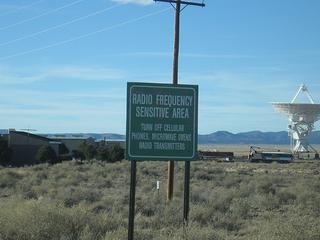The Winds of Spectrum War
NEW YORK:The impetus of the digital TV transition was to free up spectrum for wireless carriers, but what seemed sufficient when the effort began is no longer the case. Air waves are at a premium, and will only become more scarce as unlicensed devices are unleashed and the federal government gets into the physical process of deploying nationwide, wireless broadband.
“One of the best places to find inefficiently used spectrum is undoubtedly TV stations,” writes Martin Peers, a veteran media reporter with The Wall Street Journal. He goes on to make a pitch for further TV signal consolidation, freeing up even more spectrum:
“Broadcasters are allocated channels of spectrum that ranges across roughly 300 megahertz of bandwidth. Each station needs only six MHz, and few markets have more than 10 or 20 stations. Much of the spectrum is left unused, because signals interfere if they are too close together.”
Certain cellular technology could overcome the interference issues, he says. The government could underwrite another channel realignment, providing much-needed funds to financially strapped broadcasters. Peers cites analyst who said creditors holding broadcast debt would likely be open to the idea, and Comcast “would see the logic in using NBC stations’ spectrum for wireless broadband.”
Peers’ message is that Wall Street would take a kinder, gentler approach to broadcasters willing to consider yet another realignment.
The responses to Peers illustrate the ongoing chasm between engineering and policy-making. Reader Brett Allen suggests converting TV Chs. 5 and 6 to the FM radio band, although the demand is for wireless communications. Before the current DTV channel realignment even got underway, broadcast engineers suggested setting aside some of the VHF channels for unlicensed devices, rather than having the things programmed to constantly sniff out unused spectrum between channels. Those engineers knew that low VHFs would not work well with digital transmissions. The concept failed to gain FCC attention, though now, several stations transmitting digitally in VHF are moving to UHF channels.
Tom Taggart takes issue with another realignment, noting that work remains to be done on the one just completed June 12.
“The original assumption, prompted by visions of sugarplums and all that money from the auctions, was that digital TV could be crammed into the remaining channels because lower power would be needed to get the same coverage area as with the analog signal and the digital signal would be less bothered by interference and noise,” he wrote. “Neither assumption is proving true.”
Taggart mentions the VHF-to-UHF migration. That, combined with more translators and low-power TV operations, will more than sufficiently crowd the TV bandwidth, he said.
“Rather than a gold mine for over-the-air TV, it will probably mean the end of free TV.”
Washington policy analyst James Snider countered that “broadcasters are far closer to cashing in than is generally known. They have won a whole bunch of spectrum rights--under the public radar--that... most laypeople don’t know about.”
Snider, a former fellow at the New America Foundation, a Beltway think tank led by Google Chairman Eric Schmidt, doesn’t elaborate on these spectrum rights. He has typically taken the position that broadcasters end up with “the entire windfall of additional spectrum rights” through back-room political machinations.
Peers’ piece, “Television’s Spectral Gold Mine,” and the subsequent comments, are available at WSJ.com.
(Cover image by Jerome Dahdah; story image by terraplanner.)
More on RF spectrum issues:
October 12, 2009: “FCC Grants Microsoft White Space Licenses”
Microsoft now has an experimental license to use TV channels around Redmond, Wash., for testing unlicensed devices.
September 28, 2009: “Broadband Spectrum Feedback Sought”
“We seek additional comment on the fundamental question of whether current spectrum allocations, including but not limited to the prime bands below 3.7 GHz, are adequate to support near- and longer-term demands of wireless broadband.”
Sept. 17, 2009:“Legislators Press for Spectrum Inventory”
It’s rare to get agreement across party lines on Capitol Hill, but that was the case this morning when it came to radio frequency spectrum. Legislators and regulators alike agreed that an inventory was in order.
July 13, 2009: “Boucher Proffers House Spectrum Bill”
Lawmakers in the House of Representatives have rolled out a bill that would initiate a radio spectrum inventory. The measure would direct the National Telecommunications and Information Administration and the Federal Communication Commission to do a comprehensive survey of the spectrum.
April 10, 2009: “National Broadband Plan Includes Wireless and TV White Spaces”
With regards to TV “white space”, the Notice of Inquiry asks, “Given the importance to wireless broadband services of backhaul to the PSTN and the Internet, how can this spectrum be maximized to provide point-to-point backhaul in rural areas?
February 6, 2009: “Boeing Receives Experimental License in TV Broadcast Spectrum”
The WE2XVQ experimental license issued to the Boeing Company allows operation in.... broadcast TV VHF channels 11, 12 and 13 and all UHF TV channels except 37.


Get the TV Tech Newsletter
The professional video industry's #1 source for news, trends and product and tech information. Sign up below.
